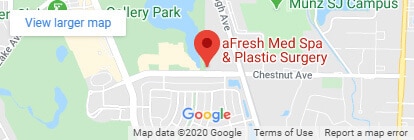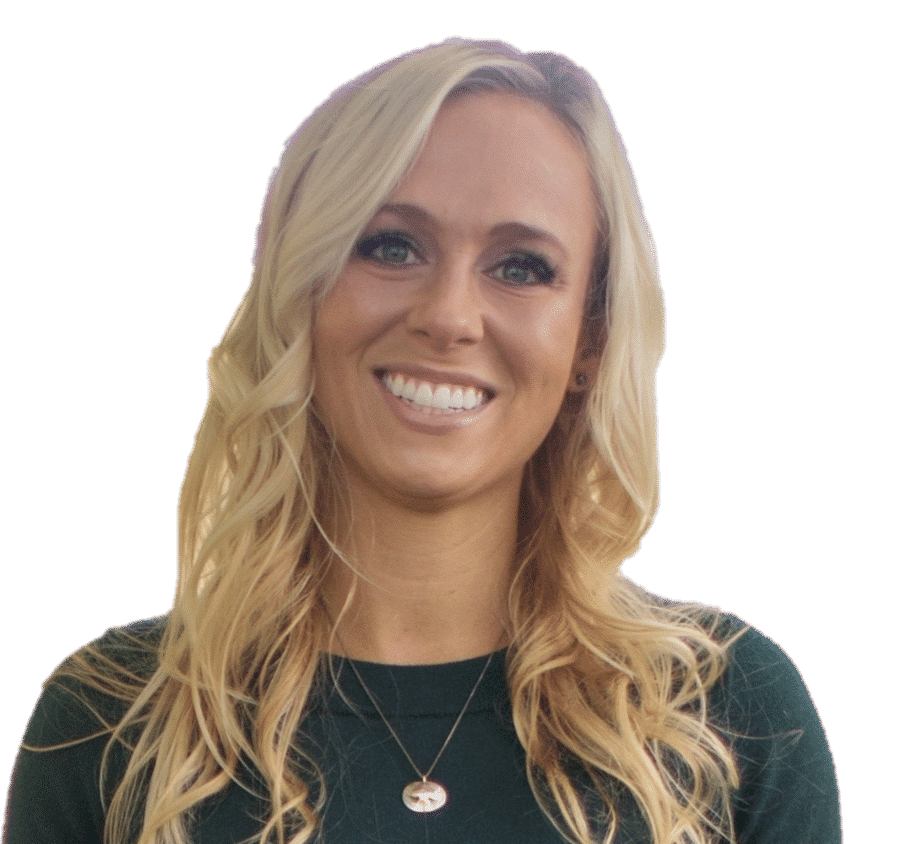
After Weight Loss – Chicago, IL
OVERVIEW
Patients who have lost a significant amount of weight often experience loose or excess skin in areas like the abdomen, arms, thighs, back, and face. If you have undergone weight loss surgery or a weight loss program and have residual excess skin, you can choose from a variety of cosmetic procedures that remove extra skin and contour the body. At the office of Dr. Karol A. Gutowski, we remove the unwanted fat and tighten the underlying tissue to provide patients with beautiful results. Our surgeons in Chicago can perform procedures on problem areas such as the stomach, back, thighs, buttocks, arms, and face.
Understanding Skin Laxity After Weight Loss
Major weight loss can leave you with stretched, loose skin that does not tighten on its own. Skin loses elasticity with time, and once the underlying fat is gone, that excess skin can remain. We often recommend surgical excision to remove the loose tissue and restore a smoother shape.
If you are wondering how to get rid of excess skin after weight loss, procedures like body lifts, arm lifts, or thigh lifts may be appropriate, along with abdominoplasty and a breast lift, depending on where you have excess skin. We can assess your skin quality and overall health to determine the safest and most effective treatment plan.
Candidates for Surgery
To move forward with body contouring surgery, you should be in overall good health and have a stable weight. We also look for patients who have realistic expectations, do not smoke, and are prepared for recovery, especially if multiple procedures are needed in stages.
You may be a good candidate if you:
- Have maintained a stable weight for several months after weight loss
- Are in good physical health with no uncontrolled medical conditions
- Do not smoke and are willing to avoid nicotine before and after surgery
- Are not planning future pregnancies
- Have realistic goals and a positive, informed mindset
- Can tolerate surgery and anesthesia safely
- Understand that staged procedures may require time between operations for healing
Conditions Treated
Weight loss patients often realize the need for skin removal surgery when the following conditions become evident as they near their goal weight:
- Sagging breasts
- Loose folds of skin around the abdomen
- Hanging skin and fat pockets around the hips
- Sagging skin and excessive wrinkling around the buttocks area
- Hanging skin from the inner thigh to the knee area
- “Bat wings” or loose skin on the underside of the arms
- “Turtle neck” or loose skin around the neck
Many of these conditions are inevitable after any major weight loss because skin, when stretched for a long time, loses its elasticity and fails to shrink back as the body becomes smaller.
Benefits of Post-Weight Loss Procedures
Improved Comfort
Excess skin can rub, fold, or pull in ways that make everyday movement uncomfortable. You may find that walking, exercising, or sitting becomes easier once the extra tissue is removed. Reducing friction and eliminating skin folds often helps clothing fit better as well.
Improved Hygiene
Skin folds can trap moisture, leading to rashes, irritation, or recurring infections. Skin removal surgery after weight loss can help you clean and dry your skin more effectively and avoid chronic skin problems. Hygiene becomes simpler and more manageable when your skin is smooth and unobstructed.
Improved Posture and Core Strength
When the abdominal wall is stretched or weighed down by excess skin, it can affect how you stand and move. Tightening the core with procedures like abdominoplasty may improve your posture and give your back and abdominal muscles better support. Some patients notice reduced back discomfort and more stability with daily activity.
Completion of Your Weight Loss Journey
Losing weight is a major accomplishment, but the skin left behind can make you feel like this accomplishment is incomplete. Post-weight loss surgery helps align how you look with the effort you have put into your health.
Combination Surgeries
We may recommend combining procedures that focus on the upper or lower body to reduce the risk of complications and improve surgical efficiency. Common groupings include:
- The upper body: Procedures such as liposuction, breast lift, tummy tuck, and arm lift may be performed.
- The lower body: Procedures such as liposuction, butt and thigh lift, and lower body lift may be performed.
A Closer Look at Possible Surgical Techniques
Liposuction
Liposuction removes excess fat from areas like the abdomen, thighs, flanks, back, or arms. It works well for patients who have good skin elasticity and isolated pockets of fat that are left behind after comprehensive weight loss. In post-weight loss patients, liposuction is often combined with skin removal procedures to fine-tune results and improve overall contour. It is not a weight-loss tool but a surgical method for refining shape.
Breast Lift
After significant weight loss, the breasts may lose volume and appear flattened or deflated. We can improve this with a breast lift, which repositions the breast tissue and removes excess skin to help the breasts have a more lifted and natural shape. Some patients also choose to add or remove volume through augmentation or reduction, depending on their goals. We adjust the approach based on your anatomy and skin quality.
Tummy Tuck
Weight loss can leave behind lax skin and separated abdominal muscles, especially after pregnancy or obesity. A tummy tuck addresses both by removing excess tissue and tightening the abdominal wall. The result is a firmer, flatter midsection and improved core support. It can also help with posture and lower back discomfort caused by weakened muscles.
Arm Lift
Skin on the upper arms often sags after major weight loss, but an arm lift removes the loose tissue and shapes the area to match the rest of your upper body. Incisions usually run along the inner arm and are placed to heal discreetly. Some patients combine an arm lift with liposuction to remove residual fat.
Butt Lift
Instead of adding volume, a butt lift after weight loss focuses on removing loose, sagging skin from the buttocks. When the skin hangs or folds over, it can make sitting uncomfortable and clothing difficult to fit. We can lift and reposition the remaining tissue to improve shape and projection.
Thigh Lift
The inner and outer thighs can retain excess skin that causes rubbing, discomfort, and difficulty with movement. A thigh lift removes this skin and tightens the area to improve function and appearance. Because the thighs are prone to friction and movement, careful incision planning is important to help the area heal properly.
Lower Body Lift
A lower body lift is one of the most comprehensive post-weight loss procedures. It targets the abdomen, flanks, lower back, buttocks, and upper thighs in a single surgery. We remove a belt of excess skin around the midsection to tighten the entire lower torso and lift surrounding tissues. It is best suited for patients with extensive skin laxity and stable health who are ready for a more involved surgical plan.
Non-Surgical Skin Tightening
After weight loss, the face and neck may also lose volume, and there may be more loose skin around the jawline, cheeks, and under the chin. Surgical methods like a face and neck lift can help, but some patients wish to address the area non-surgically. Treatments like Venus Versa use radiofrequency energy to heat the tissue and stimulate collagen production. Tightening the skin in these areas can improve facial definition and restore smoother contours without surgery. Venus Versa is a good option for patients with mild to moderate laxity who want a gradual, low-downtime treatment.
During/After Surgery
After weight loss surgery is considered a major operation in which the patient is put under general anesthesia. The number of hours it takes to complete this surgery varies, but on average it is between 4-7 hours. Overnight stay in the hospital may be required so that patients can be closely monitored.
While scarring is a part of this surgical process, we will make every effort to ensure that the incisions are kept as inconspicuous as possible. Post-surgery care is also prescribed so that the scars will heal properly. For many patients, the results after surgery are so positive and impactful, they are life-changing.
Recovery and Healing Timeline
Recovery after body contouring surgery takes time, and it is important to stay patient with the process. Swelling may last for several months, and scars can take a year or more to soften and fade. Protect your incisions from sun exposure to support better healing and avoid long-term pigment changes. In some cases, the full body contouring result takes as long to achieve as it took you to lose the weight. We will follow your progress closely and let you know what to expect at each stage.
Long-Term Maintenance
To maintain your results, keep your weight stable and stick to a healthy lifestyle. Significant weight gain can stretch your skin again and impact your shape. Staying active, eating well, and protecting your skin from the sun all help preserve the improvements we produce through surgery.
After Weight Loss Surgery FAQs
What Are the Common Areas Treated?
Typical body parts that are addressed for surgery are the abdomen, buttocks, upper thighs, breasts, arms and neck. The most common areas for improvement include the breasts and the abdominal area, which can usually be done at the same time. During the course of losing weight, the areas of loose skin will become more obvious, and it is usually around this time that patients begin consulting with a plastic surgeon.
What Is the Ideal Timing for Post-Weight Loss Treatments?
Before moving forward with this procedure, patients should be at or near their goal weight. Sometimes, removing the loose skin helps accelerate weight loss. This is the case when loose skin gets in the way of the patient’s daily physical activities.
Will Insurance Cover the Cost?
Insurance companies, for the most part, will not cover the expenses associated with cosmetic surgery. However, coverage does vary and sometimes may apply to weight loss patients where loose skin becomes a medical problem. Our billing coordinator works to provide accurate estimates and will thoroughly check the benefits of each provider.
How Long After Losing Weight Should I Wait Before a Skin Removal Procedure?
You should wait until your weight has been stable for at least six months before moving forward with surgery. If your weight is still changing, your skin may continue to shift, which can affect your surgical results. We also want to make sure you are nutritionally stable and medically cleared for the procedure.
Will the Results Be Permanent?
The results can be long-lasting and even permanent if you maintain a stable weight and take care of your skin and overall health. Aging and future weight fluctuations can still affect the appearance of your results over time. Surgery removes excess skin, but it does not stop the natural aging process. Staying consistent with lifestyle habits is important for preserving your outcome.
About Us
Dr. Karol Gutowski is a board-certified plastic surgeon known throughout the Chicago area for his expertise in aesthetic procedures for the face, breast, body, and skin. His practice combines surgical skill with advanced techniques to offer both cosmetic surgery and noninvasive facial and skin rejuvenation.
With publications in major medical journals and appearances in national media, Dr. Gutowski is recognized for his innovation and clinical excellence. Patients from across the greater Chicagoland area come to his practice for thoughtful, personalized care and reliable results. Whether you are considering a single enhancement or a more comprehensive procedure, we provide the guidance and experience needed to help you move forward with confidence.
Learn More About Procedures After Weight Loss
Post-weight loss surgery can address loose skin, improve function, and help refine areas that have not responded to diet or exercise. Dr. Karol A. Gutowski offers a range of surgical options to reshape the body and support long-term results when your weight has stabilized. To learn









